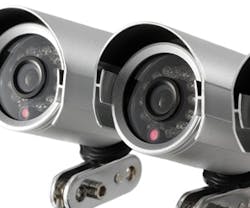Temporary surveillance is anything but routine. Maybe part of your building is exposed during a renovation project and you'd like to keep an eye on the area. Perhaps a public event will draw a large crowd and new areas need to be monitored.
"Temporary surveillance is needed when there's some infrequent or unique incident," explains Randy Montelius, vice president of engineering for Communications Engineering Company. "It could be because there was a theft in an unexpected area or there's some damage and you're not clear on the origins."
These situations call for security measures that may not be addressed by your current monitoring systems or protocol. To best prepare for unusual security needs, consider creating a mobile camera kit and plan of action that can be deployed at a moment's notice.
Personalize a Backup Plan
Identify the limitations of your existing security measures to anticipate incidents that warrant temporary surveillance. You may not typically need surveillance coverage of your parking lot or a back entrance, but what happens when you do?
Tabletop scenarios are a great way to flesh out strategies for on-the-spot security needs. Ask rhetorical questions about uncommon incidences and explore solutions. For example:
- How would you respond to concerns about equipment theft during a construction project?
- Where would it be beneficial to add extra cameras for a public event?
- Would you amplify your security force if a high-risk building in your area received a threat?
- If workplace violence occurs, would employees feel more at ease knowing surveillance will be beefed up for a period of time?
Apart from adding an extra shift of guards, you can respond to a variety of temporary suveillance needs by keeping a kit of mobile cameras on hand.
Add Mobile Cameras
A short-term surveillance kit can be tailored to your facility's needs and shared between multiple sites. A security package typically contains a combination of fixed and pan-tilt-zoom (PTZ) cameras, video storage, a transmitter for wireless models, housing options, and mounting accessories. You can also include 360-degree cameras for maximum coverage.
IP cameras, which connect to your network, offer the greatest flexibility and provide instant connectivity. IP cameras can either stream live video or have onboard recording. They are useful for remote locations, areas with low bandwidth, or situations where they need to be moved easily.
"Analog cameras need a whole system behind them to record," says Paul Bodell, executive VP of global business development for IQinVision, a manufacturer of security cameras. "With an IP camera, it's its own recorder. You can either connect it to the network or just plug it into a power source. When your event is over or the incident has occurred, you go see what the camera has on it."
Don't be hesitant to add video analytics to your cameras as well. Video analysis software can identify a security breach within its field of view.
"The software algorithms are programmed to detect certain kinds of movement, like a door opening after hours," explains Paul Smith, EVP for DVTel, a manufacturer of security equipment. "If a suspicious action occurs, it sends an alert to a predetermined location, like your security team or the police department."
Increase the Night Watch
Remember that surveillance isn't limited to camera systems – it also includes your security personnel. "You may want to increase your security force for an extended period of time, particularly for crowd control or at entrances with increased traffic," recommends Montelius.
Teaming guards with surveillance technology brings the best of both worlds. "A security guard can only be in one place at one time. Temporary surveillance is a workforce multiplier," says Bodell. "You can station a guard at a main entrance and have her or him monitor several temporary cameras, allowing for a much broader area to be covered."
Regardless of which methods are right for your property, identify your temporary surveillance strategy and be prepared for security conundrums.
Jennie Morton ([email protected]) is assistant editor of BUILDINGS.
About the Author
Jennie Morton
A former BUILDINGS editor, Jennie Morton is a freelance writer specializing in commercial architecture, IoT and proptech.
